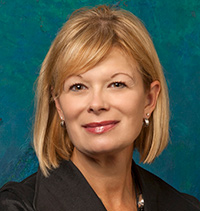By Angela E. White, CFRE
Senior Consultant and CEO, Johnson, Grossnickle and Associates

At Johnson, Grossnickle and Associates (JGA), understanding both the art and science of fundraising has been an important part of our practice since the beginning of the firm in 1994. On the art side, we focus on building strong donor relationships and engaging board members and other key volunteers in philanthropy.
Regarding the science of fundraising, we believe in understanding the current research to inform our work with donor markets, campaign trends, and the changing face of philanthropy. In addition to availing ourselves of existing research, we have commissioned new research to inform the field of philanthropy.
In 2014, we partnered with the Indiana University Lilly Family School of Philanthropy to study the characteristics of higher education institutions that receive multiple gifts of a million dollars or more. This research showed us that the tenure of the president/CEO and the ability of her/him in articulating institutional vision were key elements to securing transformational gifts. We have used this research to work with our clients in shaping donor interaction that can lead to transformational gifts.
Just this year, a new piece of research was recently released in a partnership between JGA, the Lilly Family School of Philanthropy, and BoardSource. This research, entitled The Impact of Diversity: Understanding How Nonprofit Board Diversity Affects Philanthropy, Leadership, and Board Engagement, examines the ways in which board diversity is associated with board members’ engagement with the board.
It also explores the relationship between a nonprofit’s characteristics—such as the age of the organization, level of revenue, and focus area (nonprofit subsector)—and the diversity of its board members, including their race, ethnicity, age, and gender. The report finds that both organizational characteristics and the diversity of the board affect levels of board engagement.
Among the important findings in this study include the fact that nonprofit boards that include a higher percentage of women tend to have board members who participate more in fundraising and advocacy. Members of these boards also tend to be more involved in the board’s work through their engagement.
This finding connects with the work being done by the Women’s Philanthropy Institute (WPI) at the Lilly Family School of Philanthropy by helping us understand how, when, and why gender matters in philanthropy and volunteering. Among their vast research studies, WPI provides us with the data that shows women give more and are more likely to give than their male counterparts. It also gives us the data to make informed decisions about how to engage women more deeply in charitable giving and volunteering.
I am privileged to teach the course Women as Donors for The Fund Raising School at the Lilly Family School of Philanthropy, which delves into all of the research and best practices that exist around the topic of gender differences in philanthropy.
This course focuses on the role of women as philanthropists and how development professionals can engage women more deeply in your organizations. This course is a living example of the role of research and how to blend the art and science of fundraising.
I hope you will join me on July 9 and 10, 2018 in Indianapolis for this course!

Leave a Reply